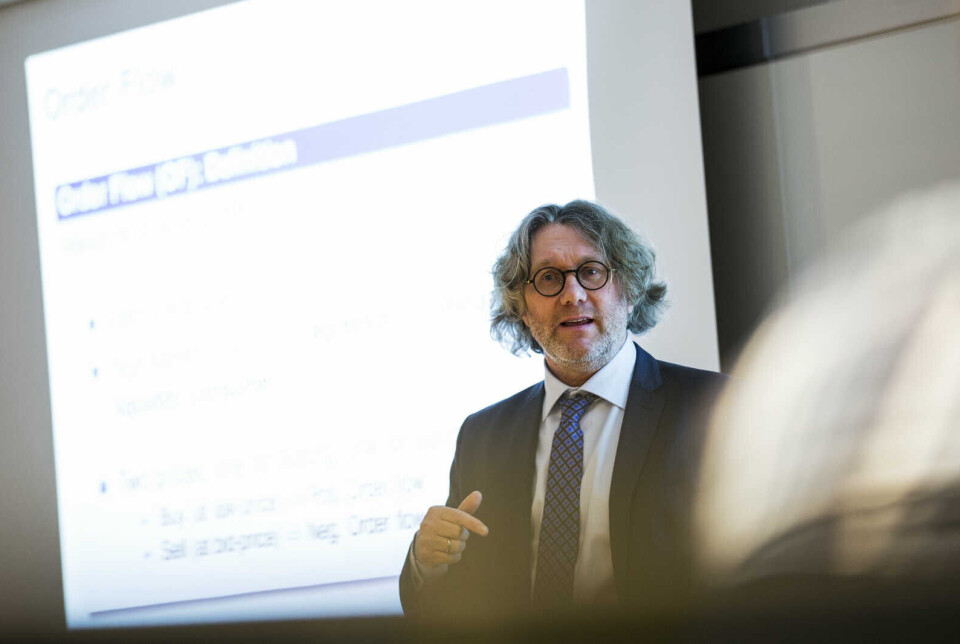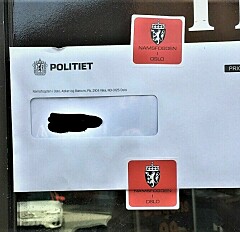
What happens when an economic bubble bursts?
“The moment the market realizes that there will be no more optimists, then the bubble bursts,” says the economics professor.
Three hundred years ago, the Briton Robert Harley was given the exclusive right to trade in South America through the South Sea Company. In 1719, the owners set in motion a wonderful flood of rumours. Belief in everything they were going to achieve triggered fierce speculation. The stock rose from £128 in January 2020 to £330 in March and £550 at the end of May.
It was wild and it just kept going. Others copied the idea of pumping up expectations in their companies. In June 1720, the British Parliament had to introduce The Bubble Act to stop other bubbles. But the value of the South Sea Company only increased. The value rose in June to £880 and £1,000 in early August.
Then the rate began to plummet. The apocryphal tree did not keep growing into the sky. Even the famous scientist Isaac Newton lost 20,000 pounds. This incredible story has since been regularly repeated around the world. But how could this happen?
Dagfinn Rime at BI Norwegian Business School will explain to us what financial bubbles really are.
Why they don't exist
First off, he’ll explain why bubbles don't develop and in any case why they don't last.
Securities such as shares get their value from the cash flows that can naturally be expected in the future. For shares, this is typically a dividend, which is called the fundamental value. Since bubbles in a market should actually disappear by themselves, economists have three challenges:
- To explain why they develop
- To explain why they persist and...
- ...how to deal with the crash —because it must come.
A market is basically in equilibrium, with competition between the actors. It is difficult to understand why there might be a particularly higher price than the underlying value of the stock, because normally when prices rise, it triggers sales as people cash in.
“As economists, we ask ourselves: Why is there no pressure to sell and push the price down? As Milton Friedman says: If something is overpriced, speculators will push prices down, or up, if something is priced too cheaply. For us, it’s demanding to explain why there are bubbles at all, which continue to persist and have not been punctured. It goes against basic economic theory,” Rime admits.
The answer is not that people are stupid.
“It is enough for a few people to be rational, because they will normally play a corrective role,” he says.
Waiting for a bigger fool
The economists' answer is that bubbles exist because someone is willing to pay more than the fundamental value, because they are not only interested in dividends, but they think they can sell to a bigger optimist later. Rime brings up John Maynard Keynes, who called this selling to ‘the greater fool’.
“Nevertheless, this really isn’t going to work. There have to be some counterweights that prevent speculators from selling and thus correcting the rate. That's where short sellers come in,” he said.
Shorting is borrowing a share from other owners and betting that the share price will fall.
“If we have a bubble, speculators will start selling, but if many people short the stock, many shares are frozen. You cannot sell a share that someone has shorted. It is locked. This limits how much can be sold. Then the price can’t be pushed down,” Rime said.
That’s one of the reasons why economists often want regulations that limit shorting, Rime said.
“The seeds of bubbles lie in speculators not being given the opportunity to sell and thereby correct the price. Shorting prevents this. The authorities, for their part, think it’s fine. This avoids ‘contagion sales’ and large sales waves, which have big, precipitous effects. But economists want the market to work perfectly. It’s not good for a share to be overpriced. It sends a signal that the share is better than it really is,” Rime said.
Bitcoin a typical bubble
In other words, a share's value can grow if there is a steady flow of optimists who think that there will be new potential purchasers, Rime said. He himself has a clear example of a bubble that is fully burst.
“Bitcoin is such a bubble. We don't need it. We have money, and bitcoin provides services we don't need. Any price above zero is roughly a bubble,” Rime said.
That doesn't mean he rejects blockchain altogether. He believes this approach can be used in services we may need and thus will be willing to pay for.
“Bitcoin is only a transaction service, and more and more studies indicate that it can be considered a bubble,” Rime said.
When asked if this doesn’t apply to the transfer of money overall, and that his belief in Norwegian currency as opposed to bitcoin is like doubting the value of sailboats when motorboats arrived, Rime replies that we already have the ships we need.
“We don't need more ships. We have what we need. Also, bitcoin is both expensive and slow. But that’s a bigger discussion,” said Rime, who has become involved in the national debate over bitcoin.
Ride a bubble
Nevertheless, there may be times when it is rational to continue investing in a bubble, he said.
“When even the Norwegian billionaire Kjell Inge Røkke says he is going to buy, it is a signal to others that there is even more to be had out of the market. It’s easy to think it’s not over. Bitcoin has also become easier to buy, and availability increases its price. Thus, share values can continue to rise, even if it’s understood that it is a bubble. That’s called ‘riding the bubble’. But you have to be aware of when to jump off. Because the moment the market realizes that there will be no more optimists, then the bubble will pop,” Rime said.
He uses a saying to describe when you know it’s really time to sell:
“When average Joe starts trading the stock, and ordinary folks believe that the value will skyrocket, then the collection of future optimists is exhausted, and you have to get out as soon as possible,” he said.
When asked if this is what happened to Kahoot, the Norwegian learning game whose stock dropped by more than 60 per cent in 2021, Rime said this:
“New technology, and the tech bubble that burst in 2002, can look like a bubble. But when the uncertainty surrounding future cash flows is great, it creates great uncertainty about the fundamental value, and it is difficult to say what is the right price for a share,” Rime said.
The time he was wrong
He explains how wrong he was when he thought Amazon was a bubble at the turn of the millennium:
“I remember thinking that Amazon was extremely expensively priced: Why on Earth? Anyone can set up a website to sell goods, I thought. But I was wrong. With Amazon, it's a bit like ‘the winner takes all’, because it made it more difficult for other companies to establish themselves,” he said.
Can't there often be real uncertainty about the fundamental value of companies like Kahoot, we ask Rime? Or Norwegian, the airline, which many people bought into, because they thought people would fly a lot again?
“Yes, and we economists find it very difficult to say that something is a bubble, period. The answer is often that we find bubble trends when you buy more of a share, because you think you can sell it soon at a higher price, without anything fundamental having happened. But if you think Kahoot is the future and invest with a long horizon, it is difficult to define it as a bubble,” he said.
If you plan to create a bubble, you are engaging in market manipulation. It is illegal for a wealthy person to simply buy into a company to create hype to drive up the price.
“If someone buys a lot of stock and creates a so-called squeeze, where there is little left and many people want the stock, and the price is bid up, it’s illegal if you then dump the shares just to make money. But it’s not often that we see such cases in the courts,” Rime said.
Translated by Nancy Bazilchuk
———
Read the Norwegian version of this article at forskning.no




































